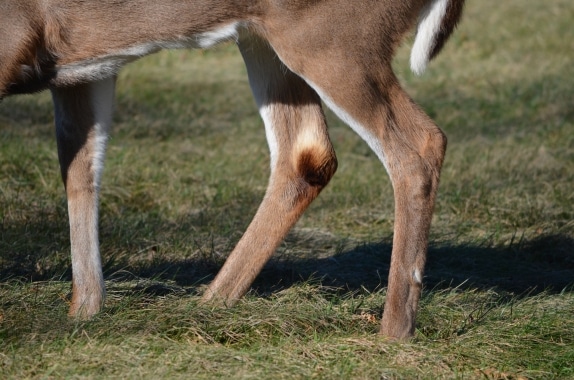The tarsal gland, arguably the most important gland in deer communication, is found on bucks and does. Each hair is associated with an enlarged sebaceous or “fat” gland that secretes an oily material that coats the hair. Research has shown this gland is active year-round in both bucks and does.
- When a deer “rub-urinates”, allowing urine to soak the tarsal gland, the oily secretions absorb certain compounds in the urine.
- Studies have shown a diverse population of different species of bacteria living in the tuft of hair that makes up the tarsal gland. These bacteria interact with the compounds from urine in a way that creates the characteristic color and odor.
- Does, bucks and even fawns rub-urinate year-round, but bucks do it more often in the breeding season, which is why the stain and odor of a buck’s tarsal gland is more prominent during the rut. Changes in the composition of a buck’s urine also likely contribute.
- Older, more dominant bucks tend to rub-urinate more frequently, so the stained area is larger. In some cases, the stain extends down the inside of each leg.
- The exact mix of bacteria is unique from deer to deer, which may give each deer a unique scent that other deer can recognize. This scent is likely deposited in scrapes when a deer rub-urinates and urine flows over the tarsal gland onto the ground.
- It is likely tarsal-gland scent carries information about the dominance status, sex, health condition and possibly other characteristics of the deer it came from.
- Recent research suggests only 5 percent of urination behaviors at scrapes are actual “rub-urinations.”
- Among the bacteria found in tarsal glands are species that can cause illness and infection in humans, so use rubber gloves or wash your hands thorougly after coming in contact with the tarsal gland of a harvested deer. However, the adage that you must immediately cut the tarsal glands off a harvested deer or risk tainting the meat is an old wives’ tale.
